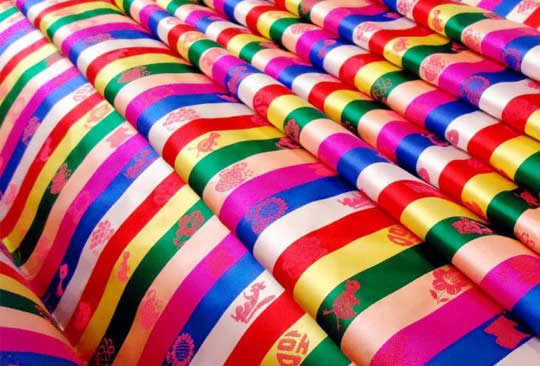Korean silk, proud of its long history
Korean silk is one of the excellent silk textiles widely known to the world for its lightness and quality as well as beautiful patterns and softness.
Korea is one of the origin places of silk.
At the bottom of the clayware excavated at Namgyong site in Pyongyang, were engraved mulberry leaves which a silkworm loves the most and also at the Jithap-ri site in Pongsan County excavated silkworm drawn clayware and sculptures shaped like a silkworm. These facts show that sericulture started from very long ago in Korea.
Generally silk thread is reeled off the cocoons of silkworms molted three or four times but unlike the other countries the Koreans have bred three molted silkworms and weaved silk clothes from their cocoon thread.
The old literature says that original Korean silkworms molt three times and that they hate moisture and smoke.
Also, lots of ancient silks were excavated from the ancient tombs around Rangnang District, Pyongyang and proved that they were woven from cocoon thread of silkworms molted three times.
For an ancient Korean silk, there were several silks including silk woven with double-ply thread and in the period of Koguryo were produced various kinds of quality silks such as a twill with patterns, Kum(silk mixed with golden thread) and Ra(silk woven with thin thread).
By the time of Koryo, silk production technology was further developed and its variety was much increased, as well as its quality also improved thus exported not only to neighboring countries but also to the Middle East to become known as ‘‘Koryo silk’’ in the world.
As mentioned, Korean silk is an independent and peculiar silk with a long history.
